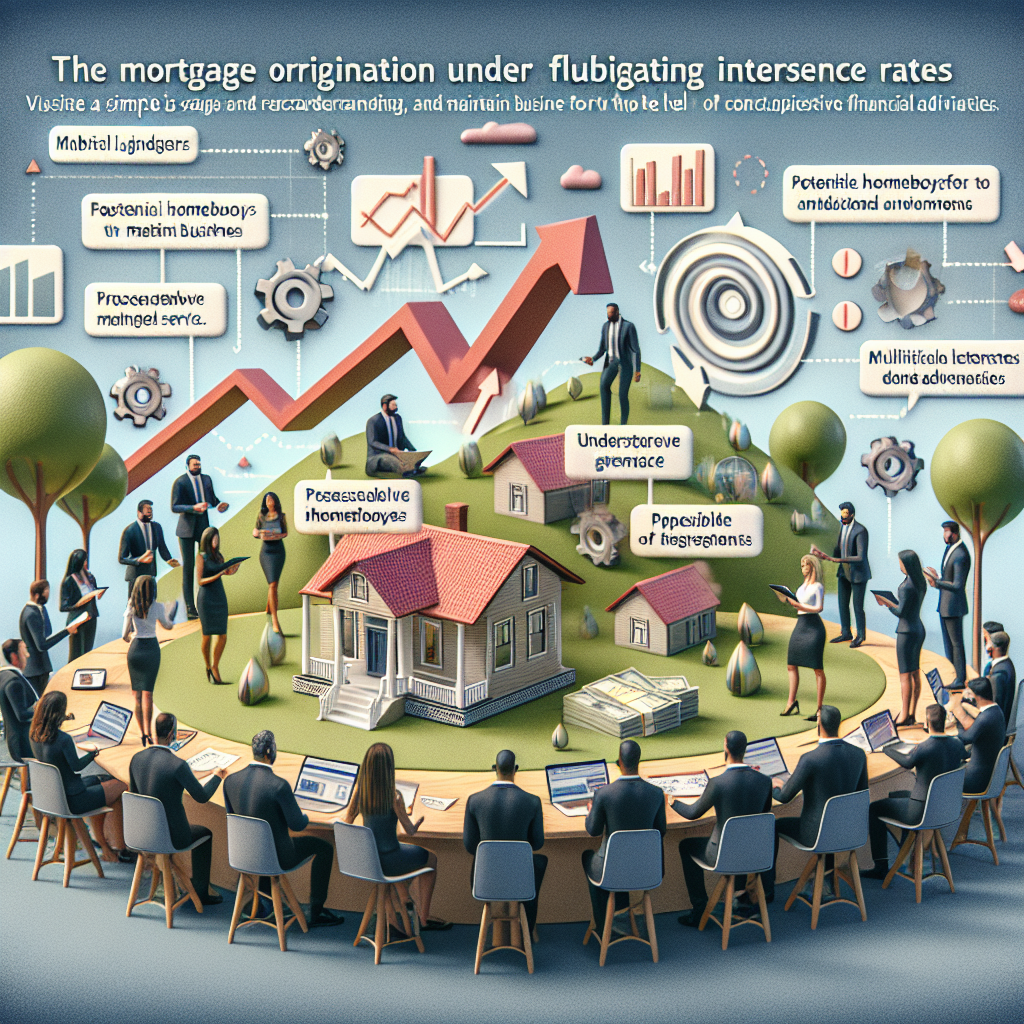-
 Navigating the Shifting Landscape of Mortgage Origination in Today's Market
Navigating the Shifting Landscape of Mortgage Origination in Today's Market Examine the current trends influencing mortgage origination, including interest rate shifts, regulatory challenges, and technological advancements in the mortgage industry.
Examine the current trends influencing mortgage origination, including interest rate shifts, regulatory challenges, and technological advancements in the mortgage industry.
Freddie Pilots Financing for Manufactured Homes
- Friday, 30 November 2018
- Lending

Freddie Mac has begun a two-year manufactured housing pilot designed to increase the number of affordable homes and provide lenders with innovative financing options.
“Currently there are more than 22 million families living in factory-built housing, and with that number expected to grow, there’s an opportunity for factory-built homes to address the housing supply shortage and quality housing overall,” Mike Dawson, vice president of Single-Family Affordable Lending Strategy and Policy at Freddie Mac. “This new generation of manufactured housing might just be the best option for first-time homebuyers, Millennials, and empty-nesters looking to downsize.”
These financial alternatives were designed to be similar to conventional lending alternatives. Manufactured homes can deliver outstanding quality at prices that are up to 50 percent less per square foot than conventional site-built homes. These savings can enable more Americans to own their own home, even in the face of an ever-widening housing affordability gap.
“Finding a home is more difficult than ever because of the ongoing housing supply shortage in many parts of the country, especially when looking for a home at a lower price point,” said Dawson.
These homes have features such as permanent foundations and pitched roofs. Many of these homes also come with energy-saving features like Energy Star Qualified Low-E windows, programmable thermostats and minimum insulation values.
Freddie Mac will treat loans secured by factory-built home loans the same as those secured by single-family site-built homes. If a factory-built home meets certain specifications will be eligible for traditional financing. Appraisers will be able to use site-built housing as a comparable for valuation.
Manufacturers and lenders must follow HUD-code guidelines for the home construction and siting of the home to ensure eligibility Freddie’s guidelines; lenders must follow local and state guidelines for manufactured housing titled as real property.
Read more...First American, Old Republic Bring Blockchain to Title Insurance
- Wednesday, 28 November 2018
- Lending

First American Financial Corp. has launched a shared blockchain system and Old Republic Title Insurance Group is the first participant. The technology was developed to increase efficiency, reduce risk and improve the title production process.
Each policy will be coded with a unique identifier by property, streamlining the search process and increasing the accuracy of searches for prior title insurance policies. The aim is to facilitate the exchange of prior title insurance policies between underwriters that use the system. First American offers title insurance, settlement services and risk solutions for real estate transactions, and Old Republic is the third largest title insurance underwriter in the U.S.
 “First American has a long history of innovation and our development of this system demonstrates our ongoing commitment to applying state-of-the-art technologies that reduce risk and improve the real estate transaction process,” said Dennis Gilmore, CEO of First American. “The potential exists to create a robust exchange of title insurance policy information that delivers greater transparency, efficiency and accountability to the industry and enhances the closing experience for consumers.”
“First American has a long history of innovation and our development of this system demonstrates our ongoing commitment to applying state-of-the-art technologies that reduce risk and improve the real estate transaction process,” said Dennis Gilmore, CEO of First American. “The potential exists to create a robust exchange of title insurance policy information that delivers greater transparency, efficiency and accountability to the industry and enhances the closing experience for consumers.”
The common practice of sharing policy information among title insurance underwriters can be beneficial to underwriters and consumers alike, as it both increases efficiency and reduces risk. This blockchain system melds that established practice with emerging technology to further increase efficiency and lower risk in the title production process
Read more...Corelogic: California’s Wildfire Cost Estimated $15B-$19B
- Tuesday, 27 November 2018
- Lending

Corelogic estimates that residential and commercial losses from the recent catastrophic wildfires in California are between $15 billion to $19 billion. According to the analysis, losses from the Camp Fire, the most destructive wildfire in the state’s history, are estimated to be between $11 billion and $13 billion. In addition, losses from the Woolsey Fire in Southern California are estimated to be an additional $4 billion to $6 billion.
“These wildfires have been a personal and financial tragedy for many families,” said Tom Larsen, principal of industry solutions at Corelogic. “The proper estimation of the value of a home is critical because often in situations of wildfire, the home is completely lost. A deficient valuation can lead to a situation where homeowners have inadequate funding to replace their home.”
Fire is covered under a standard homeowners’ policy, so the majority of homeowners are likely to have some protection from the financial challenges surrounding recovery.
Read more...Genworth To Launch Risk Based Pricing Engine in December
- Monday, 26 November 2018
- Lending

Genworth Mortgage Insurance is launching Genrate, a proprietary risk-based pricing engine providing lenders with a more granular approach to pricing for borrowers pursuing the dream of homeownership. With the introduction of Genrate slated for December, lenders can opt-in to this proprietary pricing solution or choose from Genworth's standard published rate card. Loan originators will access to risk-based pricing through their loan origination systems, Optimal Blue or Rate Express.
The launch was informed by market research and a thorough evaluation of customer needs, uncovering that certain segments of lenders have begun seeking more dynamic pricing solutions. Genrate provides that solution, allowing Genworth to expand its value proposition to meet a broader range of customer needs.
"Demand for more dynamic pricing is growing, both in our industry and more broadly. Offering lenders the option of either rate card or risk-based pricing is the best way to show lenders that we understand and can continue to meet their evolving needs," said Rohit Gupta, president and CEO, Genworth Mortgage Insurance. "Maintaining our standard rate card to complement Genrate allows us to still offer the transparency and simplicity some lenders prefer while addressing other lenders' shifting prioritization towards more dynamic pricing."
Read more...





